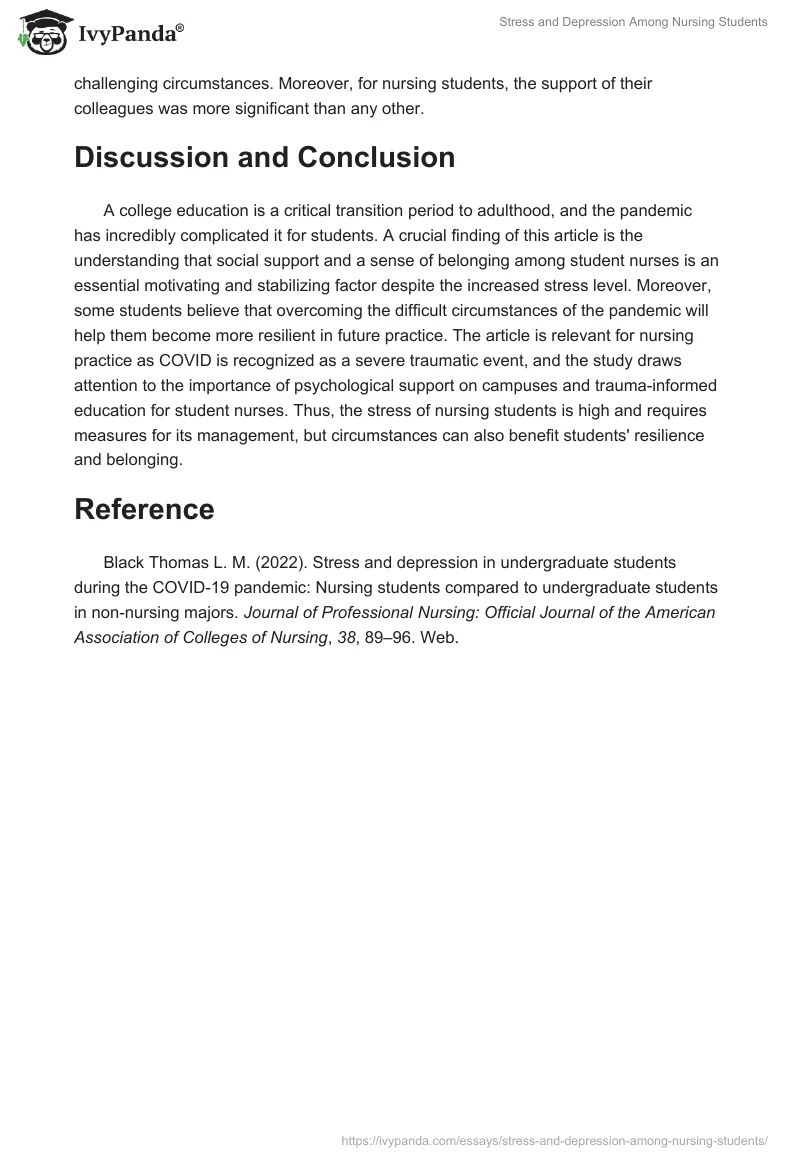Introduction
The pandemic COVID-19 changed existing education processes and adversely affected students’ mental health. Nursing students have always had increased requirements for their specialty, but new circumstances have also deprived them of their previous hospital practice opportunities for obtaining licenses. Lisa Black Thomas examines the situation in the article “Stress and depression in undergraduate students during the COVID-19 pandemic: Nursing students compared to undergraduate students in non-nursing majors.” The study aims to determine how different the manifestations of stress and depression are among American nursing students compared to students of other disciplines and what supports nursing students in continuing their education.
Method
The study combines quantitative and qualitative methods – the author collected quantitative data to measure stress and depression levels through online questionnaires and qualitative data – during interviews. The analysis of the data was carried out using statistical and content analysis, respectively. More than two thousand students of various disciplines took part in online surveys, and 12 nursing students participated in interviews. A large sample size benefits the study by improving the accuracy of data analysis.
Main Results
The quantitative data analysis showed that nursing students felt stress and changes in educational processes due to the pandemic more than students in other disciplines. At the same time, depression symptoms in medical students, on the contrary, were lower than in the rest of the sample. Content analysis of interviews demonstrated that social support was a critical factor that contributed to continuing learning under challenging circumstances. Moreover, for nursing students, the support of their colleagues was more significant than any other.
Discussion and Conclusion
A college education is a critical transition period to adulthood, and the pandemic has incredibly complicated it for students. A crucial finding of this article is the understanding that social support and a sense of belonging among student nurses is an essential motivating and stabilizing factor despite the increased stress level. Moreover, some students believe that overcoming the difficult circumstances of the pandemic will help them become more resilient in future practice. The article is relevant for nursing practice as COVID is recognized as a severe traumatic event, and the study draws attention to the importance of psychological support on campuses and trauma-informed education for student nurses. Thus, the stress of nursing students is high and requires measures for its management, but circumstances can also benefit students’ resilience and belonging.
Reference
Black Thomas L. M. (2022). Stress and depression in undergraduate students during the COVID-19 pandemic: Nursing students compared to undergraduate students in non-nursing majors. Journal of Professional Nursing: Official Journal of the American Association of Colleges of Nursing, 38, 89–96. Web.


